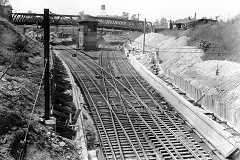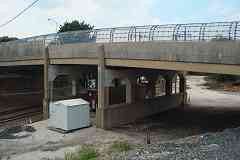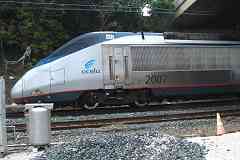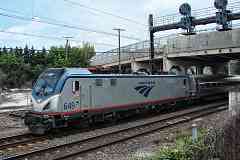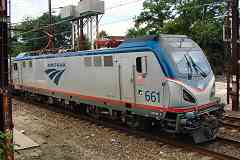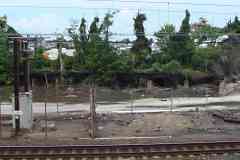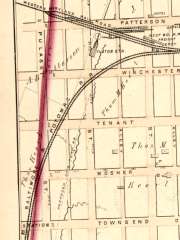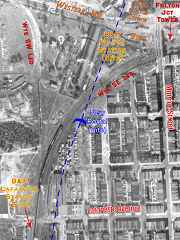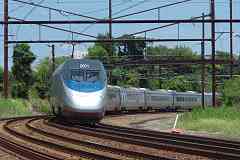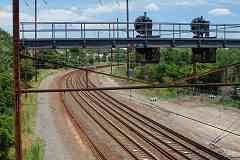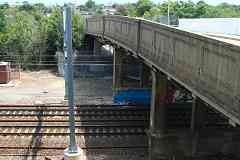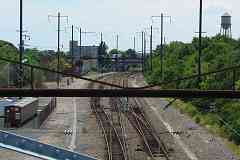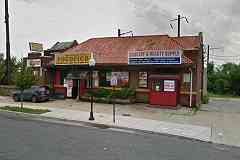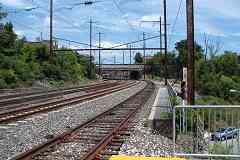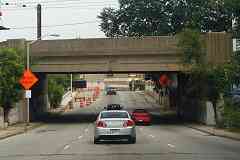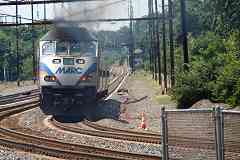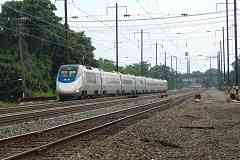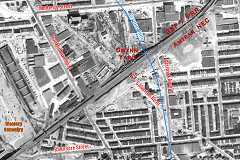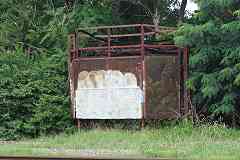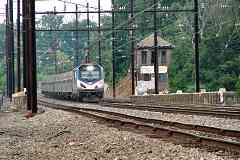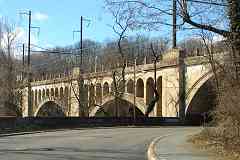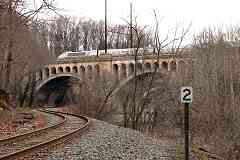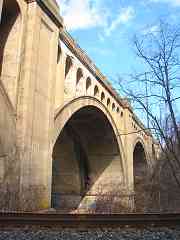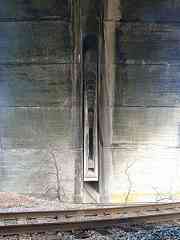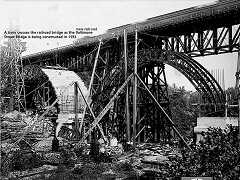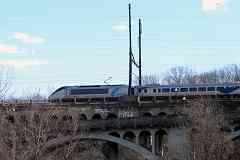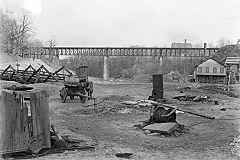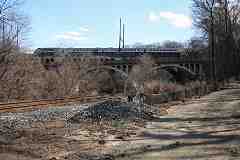|
This wonderful photo captures the line undergoing electrification where
the Western Maryland (WM) Railway splits right and PRR left. The
photographer is standing at Fulton Avenue with the Baltimore and
Potomac (B&P) tunnel's south/west portal not far behind him.
To make room for the catenary, the B&P Tunnel's floor was lowered by
18 inches, while outside the tunnel the grading had to be adjusted to
match, hence the new concrete retaining walls at the sides here. Note
the beveled edges of the concrete footing for the catenary pole; such
angling is characteristic of original footings, most of which remain
extant as of 2020.
Fulton Junction Tower seen near center endured until 1965 when it was
demolished because new tech allowed track switches to be controlled
from B&P Junction Tower. Prior to that, Baltimore terminal's
four PRR towers (B&P Junction, Fulton Junction, Union Junction, and
Biddle Street) housed a total of 254 track control levers.
That's Monroe Street crossing over the tracks.
Links:
source photo,
LoC tower info (PDF)
| 